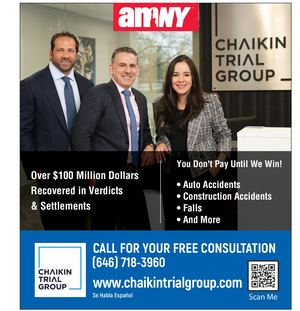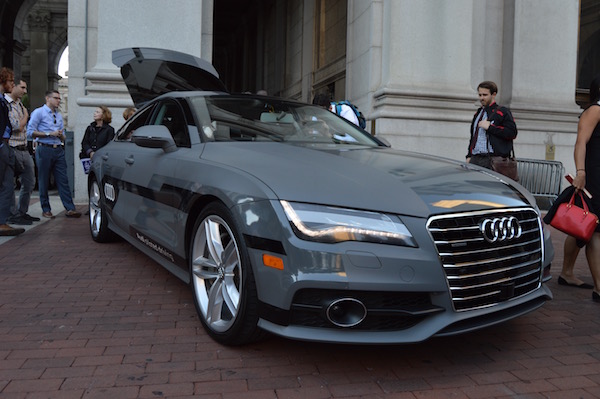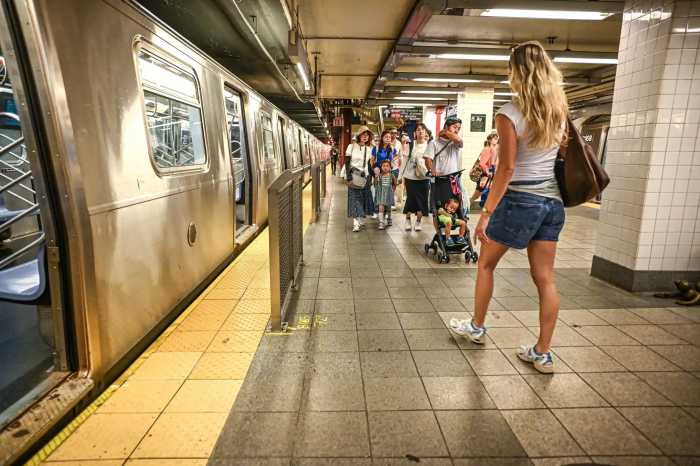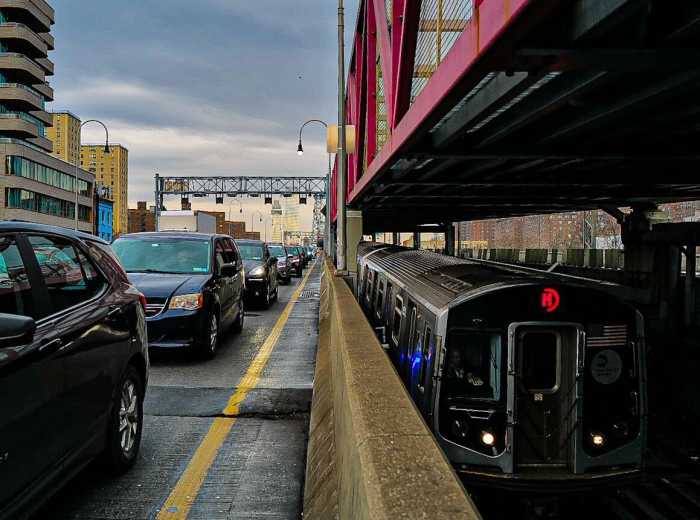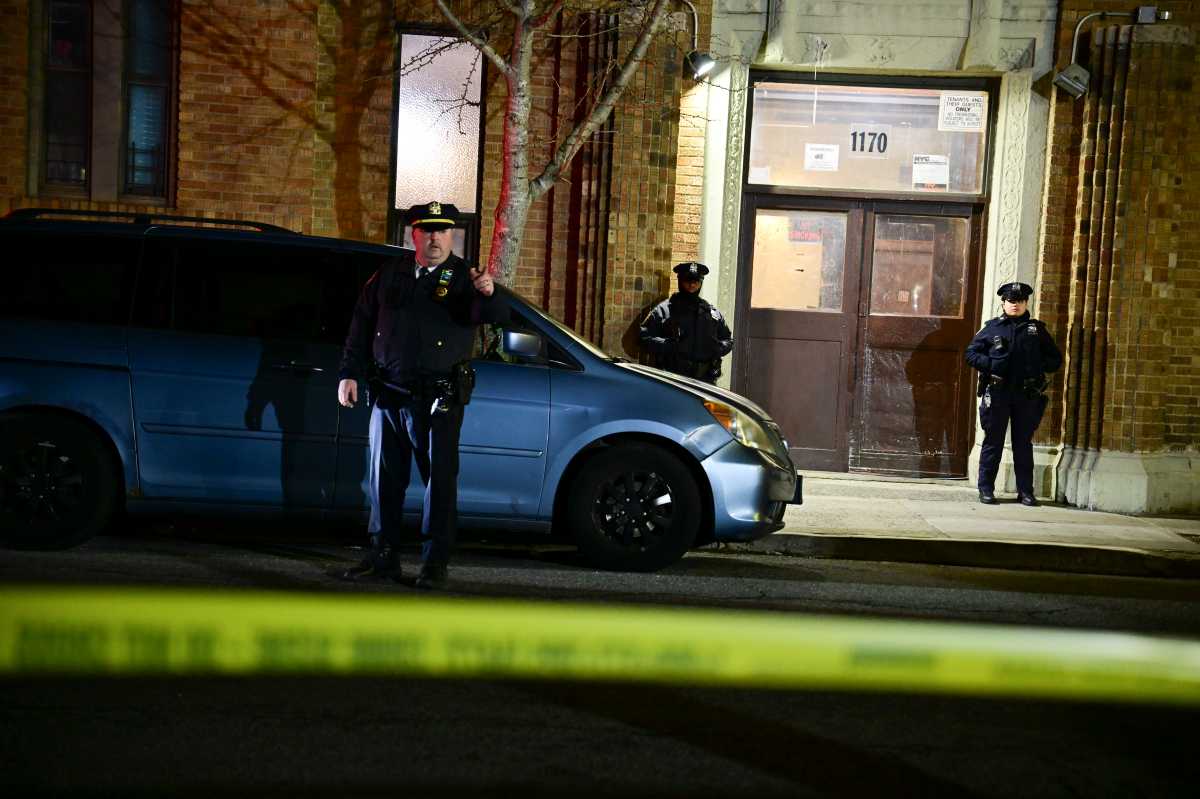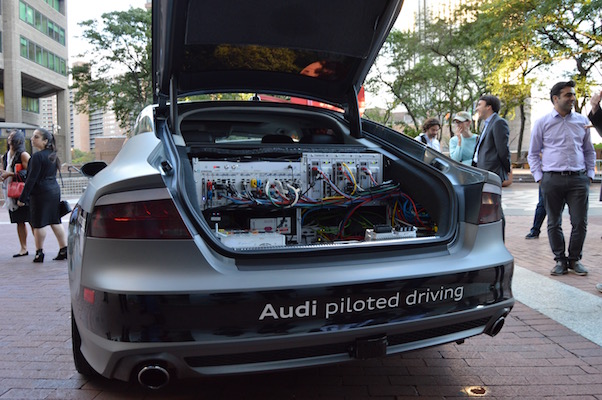
BY JACKSON CHEN | As driverless vehicles have become more a reality than a sci-fi story, the borough president facing the city’s thorniest congestion challenges is pushing discussion about the many gray areas raised by a monumental change that is surely coming.
During a September 27 driverless vehicle panel hosted by Manhattan Borough President Gale Brewer, the German car manufacturer Audi stated that it is roughly two years away from introducing a vehicle that can drive autonomously on interstate highways up to 25 miles per hour.
Autonomous vehicle technology is also being tested throughout country by other major players, with the popular ridesharing app Uber’s self-driving fleet of cars now experimenting in Pittsburgh, Google’s self-driving car project underway in California, and Tesla’s autopilot model being tested on highways.
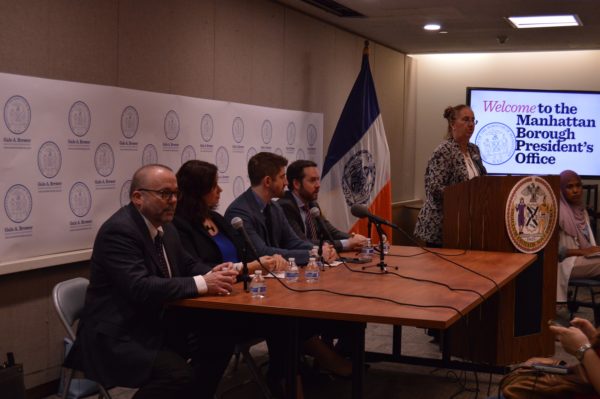
For Brewer’s panel, a prototype version of a next-generation Audi A7 fully capable of driving on freeways by itself sat parked outside the David N. Dinkins Municipal Building downtown.
Even as Brad Stertz, Audi’s director of government affairs, acknowledged that being able to drive hands-free in a traffic jam isn’t “that exciting,” he said the widespread progress on prototype development of the technology has grabbed the attention of the American public and is propelling the conversation.
On September 19, the US Department of Transportation released guidelines — including a 15-point set of safety standards and regulations that it urged states to refine to meet specific traffic conditions in their localities — that broadly embraced the advent of self-driving cars.
“One of the points we want to make with this is it’s essential to get consumers and drivers to understand what the technology is and not be afraid of it,” Stertz said.
The A7 prototype, which dazzled even New Yorkers who only got the chance to sit in the front seat while it was parked, was developed in 2012, according to Spencer Matthews, the industry and government relations analyst for Volkswagen Group, Audi’s parent company. The vehicle, he explained, is equipped with about 20 different sensors that can absorb external information and translate it into an action within milliseconds –– much faster than any human ever could. While the A7 could drive autonomously on freeways, the frequently congested streets of Manhattan present unique physical challenges –– and raise legal questions, as well.
With Audi’s technology parked right outside, Brewer said the questions surrounding autonomous vehicles don’t start with “if” anymore, but with “how” and “when.”
The borough president is eager to learn more herself, even while seeing a need to educate everyday New Yorkers about the possible impacts the technology would have on Manhattan’s infrastructure, its labor force, and its traffic regulations. Industry experts are needed to inform that discussion, she said.
At the city’s Department of Transportation, the internal conversation began roughly a year ago, and the agency now wants to join that to the national discussion of how to move forward.
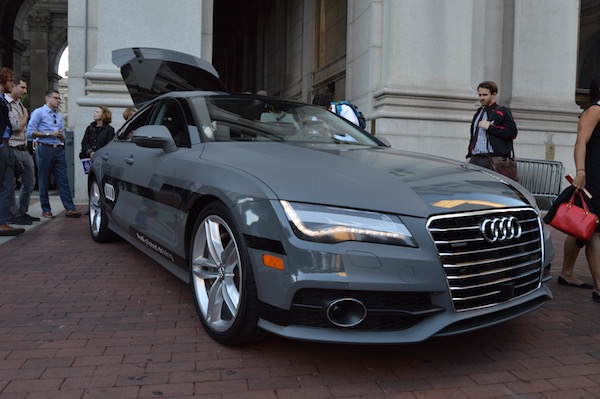
“The ultimate test for autonomous vehicles will be whether or not they can effectively navigate cities like New York,” Will Carry, the DOT’s senior director for special projects, said. “So we really feel like we should be partners in [the national] discussion.”
For several of the panelists, Manhattan serves as a unique stress test for the new vehicles because of the obstacles its clogged street grid provides, with cars in transit joined by a glut of pedestrians, increasing numbers of bicyclists, and, of course, the ubiquitous double-parked cars.
Experts raised a variety of concerns –– some of which were contradictory, a sign of just how much is unknowable at this stage.
Sarah Kaufman, the assistant director for technology programming at the New York University Rudin Center for Transportation, explained that most autonomous vehicles are programmed to not come within three feet of pedestrians.
“Once our pedestrians realize these cars are programmed to stop when they cross the streets, there will be a jaywalking paradise and these cars will never get anywhere,’ she warned, citing the likely impact “pretty much anywhere in Manhattan and parts of Brooklyn, Queens, and Staten Island.”
She added that driverless cars could result in unanticipated consequences, like residents beginning to move farther out from the city’s center because of the ease of commuting on highways.
Sam Schwartz, the city’s traffic commissioner in the 1980s and a widely respected transportation engineering consultant, said that autonomous vehicles could also encourage more people to use cars and reverse the recent healthy trend in people walking and cycling to their to destinations.
“Inactivity kills four or five times more people than car crashes kill,” Schwartz said. “Even if autonomous vehicles knock down the number of people killed in car crashes, which I have no doubt they will, if we have less activity we may kill more people through inactivity.”
One of the biggest concerns raised by driverless cars are about the professions they would impact, such as driving taxis, short-haul delivery vehicles, and long-haul trucks.
Jeff Garber, the director of technology and innovation for the New York City Taxi and Limousine Commission, emphasized there is still time for those industries to adjust since he expects the rollout of autonomous vehicles to be a slow transition.
“We’re going to have to be adaptable to how this technology looks,” Garber said, adding, “We’re kind of putting the cart before the horse a little bit because we’re not quite sure how it’s going to come. But I do think we have a little more time, it’s not going to be a catastrophic dropping of all the drivers.”
Audi’s Stertz said there could even be new job opportunities to supplement the use of driverless cars. He said there are possibilities for traffic management positions to help autonomous vehicles deal with unique situations that arise.
“Until the time when cars truly can outthink us, there’s going to need to be some human management of the fleets that are out there,” Stertz said of the technology’s impact on the labor force.
Schwartz, however, predicted that self-driving cars could take over current driver-focused industries as quickly as 20 years, which he said represents rapid change in the grand scheme of a city as complex as New York.
“Twenty years to change a workforce is very fast,” he said. “You’re going to have people that are 30-years-olds that are now truck drivers and they’ll be 50-years-olds. What do you do with them when there’s no more truck drivers?”
The best solution, according to Schwartz, would be to assimilate self-driving cars slowly into the current transportation infrastructure, with legislation preventing the abrupt domination by autonomous vehicles.
Everyone on Brewer’s panel agreed that it’s time to start talking about how to regulate the new technology.
“The tech is old and the opportunity is here so it’s time for policy and culture to catch up to the technology that’s enabling self-driving cars,” said James Felton Keith, a member of the public who took the A7 prototype for a stationary spin. “In these cities, as population becomes more and more dense, technologies that keep us out of each other’s way are going to be increasingly important.”
